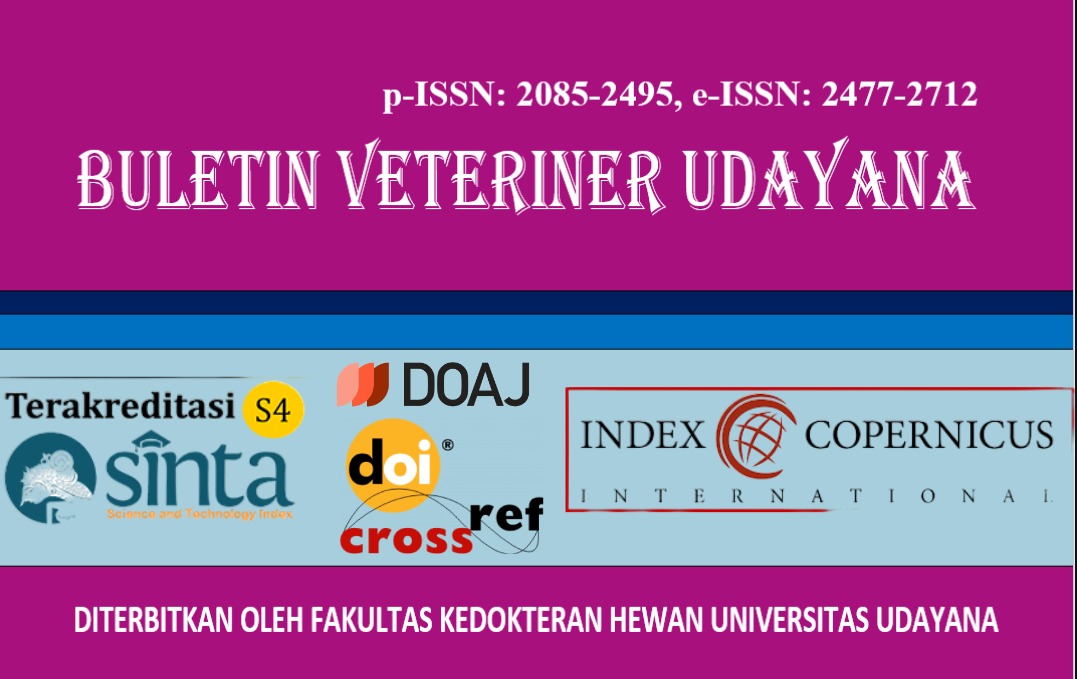DETECTION OF ALBENDAZOLE RESISTANCE AGAINST GASTROINTESTINAL NEMATODE INFECTIONS IN BALI CATTLE IN BALI
DOI:
https://doi.org/10.24843/bulvet.2025.v17.i03.p12Keywords:
Albendazole, FECRT, gastrointestinal nematodes, resistance, bali cattleAbstract
Gastrointestinal nematode infection is a common disease affecting Bali cattle, leading to health issues and reduced productivity. The control of this disease using Albendazole can reduce nematode egg counts; however, long-term use may result in resistance. This study aims to detect Albendazole resistance against nematode infections in Bali cattle based on Egg Per Gram of Feces (EPG) values and the Fecal Egg Count Reduction Test (FECRT). The study employs a one-group pretest-posttest design with 20 Bali cattle aged 6 months to 2 years infected with gastrointestinal nematodes. Fecal samples were collected on day 0 (before treatment), day 7, and day 14 after Albendazole administration at a dose of 7.5 mg/kg body weight. Fecal samples were examined using the Whitlock method, and the data were analyzed using the FECRT and the Wilcoxon test. The results showed a significant difference (p < 0.05) in nematode egg counts before and after treatment. The overall FECRT value on day 14 reached 84.1%, indicating that Albendazole is fairly effective but with signs of resistance. The nematode species identified included Trichostrongylus sp, Ostertagia sp, and Cooperia sp, each showing different responses to treatment. Trichostrongylus sp and Ostertagia sp exhibited high sensitivity, with an FECRT value of 100% on day 14, while Cooperia sp reached only 75%, indicating resistance to Albendazole. In conclusion, Albendazole administration in Bali cattle effectively reduces gastrointestinal nematode infections, but its efficacy varies depending on the nematode species, with the highest resistance indication observed in Cooperia sp. Treatment of nematode infections in Bali cattle with Albendazole should be accompanied by anthelmintic rotation to prevent resistance, along with improved barn hygiene and feed management to reduce the risk of reinfection.




